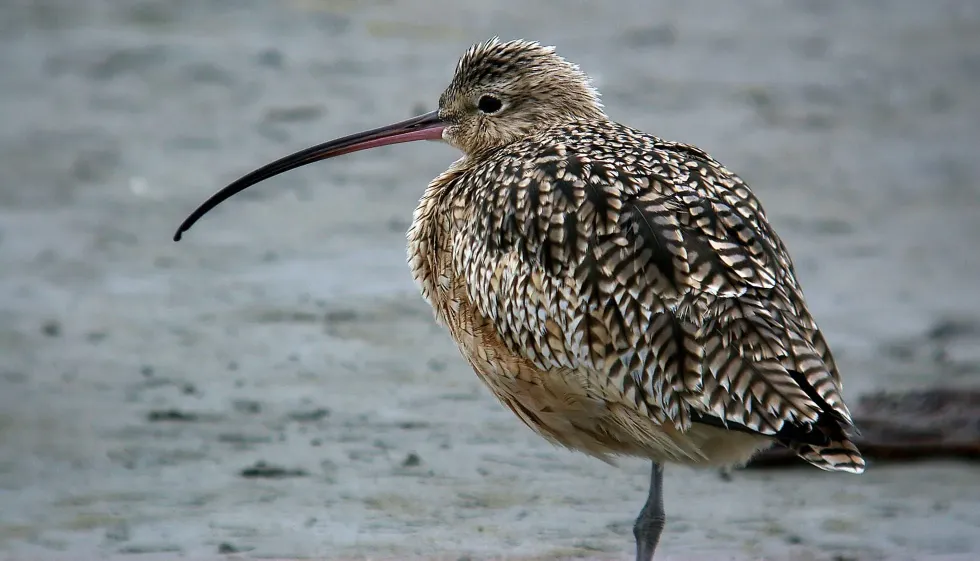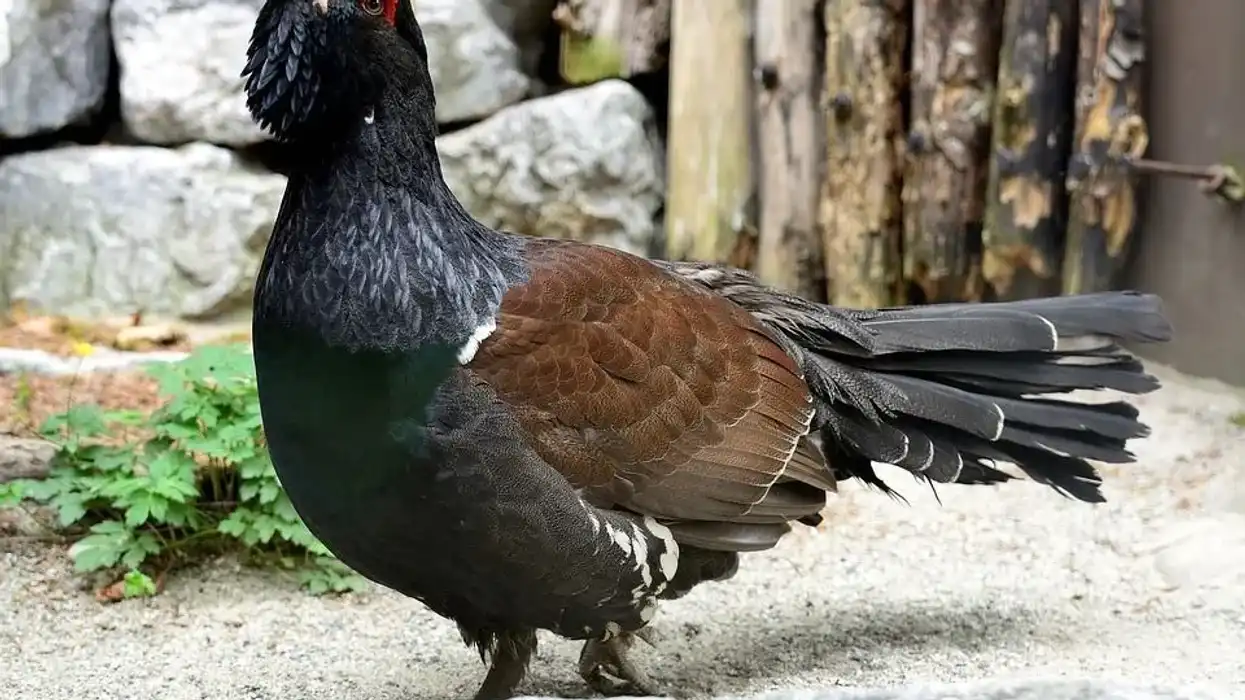Do you like to know about birds, how they look and every aspect of them? A bird known as curlew is a bird whose call is becoming increasingly rare.
Curlews are birds that have nine subspecies, which are recognizable by their curved bill that is long, slender, and down curved and mottled brown plumage. There are different curlew species which vary in size, shape, color, and body structure. One of the most interesting curlew adaptations is the curved bill.
These North American birds use their curved bill to find their food by probing the soft mud. This largest shorebird of North America belongs to the family Scolopacidae.
While the curlew enjoys a stable population across its North American curlew habitats, the similar species Eurasian curlew (Numenius arquata) is facing an existential crisis as only around 7000 members of the species are left in the wild habitat, thereby necessitating conservation efforts. Here are some of the most interesting facts about the long-billed curlew bird.
Afterward, do check out our other articles on long billed curlew facts and barn owl facts as well.
Curlew Interesting Facts
What type of animal is a curlew?
The long-billed curlew is a type of bird that is characterized by its long, slender, and down-curved bills and also mottled brown plumage. Curlews are known to be one of the most ancient lineages of Scolopacidae waders.
What class of animal does a curlew belong to?
The long-billed curlew species belong to the class of Aves. Long-billed curlews are distributed worldwide and are found in different parts of the world according to their habitat. Most of the species show migratory habits.
How many curlews are there in the world?
There is no accurate information so as to how many curlew birds are there in the world. There are a total of nine curlew species of the bird, and therefore, the number keeps changing according to different factors which determine the number of curlews.
Where does a curlew live?
Curlews are known to be found in the areas that are temperate as well as in the colder sides of sub-Arctic regions of the Northern Hemisphere and then they also migrate to the south. They are also found in dry uplands during the season of migration. The different species of curlews are found in different habitats.
What is a curlew's habitat?
A curlew’s habitat includes temperate and sub-Arctic regions in the parts of the Northern Hemisphere. The habitat of the species of curlews varies according to their type and what is suitable for their body. The long-billed curlew habitat includes prairie grassland, coastal regions, flooded fields, mudflats.
Who do curlews live with?
Curlews either live alone or in small groups. Curlews usually like to live alone rather than living in small groups.
How long does a curlew live?
The lifespan of a curlew is 20 years and is determined by different factors such as climate change, change in diet, environmental changes, threats to their life.
How do they reproduce?
Curlews breeding takes place in their habitat where the ground is covered with leaves, twigs, sticks, stones, or sparse grass which long-billed curlew birds prefer for nesting. Curlews are dependent on camouflage eggs and cryptic plumage to avoid their predators.
The breeding rituals of curlews are different according to the different species.
After the breeding process is over, the female lays the eggs in the curlew nest and then both male and female curlews protect the eggs from predators till they hatch. The parents take care of their curlew eggs till they hatch and tend to the juveniles till they are old enough to fly away on their own.
What is their conservation status?
The conservation status of the long-billed curlew is of least concern as the population of this species is stable across its habitat in North America. But there are serious concerns regarding its similar species, Eurasian curlew's population.
Eurasian curlew is near threatened in terms of its population as only around 7000 members of the species are left, due to the destruction of prairie breeding habitats.
Curlew Fun Facts
What do curlews look like?
Curlews are a type of bird that is mottled brown and grey and legs that are bluish and long, and a bill that is down curved and pink underneath. Curlews can easily be differentiated by their smaller whimbrel by the bill and also their head pattern that is plain.
How cute are they?
Curlews are cute in their appearance and are playful in nature. These large shorebirds of North America are not aggressive. The curved curlew bill makes them look even cuter.
How do they communicate?
Curlew calls and displays are used by these birds to communicate with others. These large shorebirds of North America communicate by two-note whistles and produce a distinctive call year-round. They also use territorial displays and use displays like ground-calls and visual-flight displays in males.
How big is a curlew?
Curlews are 19.7-25.6 in (50-65 cm) long with a wingspan of around 35-42 in (89-106 cm). Curlews are generally big as compared to the other species of birds.
How fast can a curlew fly?
There is no accurate information regarding how fast a curlew can fly. They usually tend to fly faster when they see their predator approaching them.
How much does a curlew weigh?
The weight of a curlew varies according to the different species. The average weight of a curlew is 0.37-1.60 lb (0.16-0.72 kg) which changes accordingly due to the changes in the diet.
What are their male and female names of the species?
There is no accurate name for the male and the female species of curlews. They are known as male curlews and female curlews respectively.
What would you call a baby curlew?
There is no specific name for a baby curlew.
What do they eat?
The curlew diet comprises earthworms and other deep-burrowing prey such as shrimp and crabs. Curlews peck on the ground with their curved bill and eat grasshoppers, beetles, caterpillars, spiders and eggs, and nestlings but occasionally.
Are they dangerous?
No, curlews are not dangerous. They are territorial birds during their nesting season, and when they are in higher populations, they will also behave colonially.
Would they make a good pet?
No, curlews do not make good pets as many of the species have declining populations, and also, every bird is important in order for the survival of the species. Therefore, in most places, it is illegal to own a curlew in your home.
Did you know...
The curlew’s bill is known to be sensitive and also acts like tweezers and helps them in looking in the mud for their prey.
Earlier, Eurasian curlews used to be eaten, and the recipes of the this were included in many recipe books.
You can find different species of curlews in different parts of the world according to their habitat. The male and the female Eurasian curlews look similar to each other and it becomes difficult to identify them.
Curlew symbolism
As a native symbol, curlews referred to the pains and sorrows of parenting. The symbolism seems to be a common theme around dreams that feature them.
All about the curlew's bills
The bills of curlews are special as they are very long and help them in catching their prey easily. Curlews are distinguishable because of their bills as they are very long in size.
What kinds of curlews are there?
There are a total of eight kinds of curlews, which are Eurasian curlew, Eurasian Whimbrel, long-billed curlew, Far Eastern curlew, Eskimo curlew, slender-billed curlew, little curlew, and bristle-thighed curlews. There are differences in curlews are based on their body size, shape, color, diet, habitat, and other factors.
Here at Kidadl, we have carefully created lots of interesting family-friendly animal facts for everyone to discover! For more relatable content, check out these tawny eagle facts and American bittern facts.
You can even occupy yourself at home by drawing one on our Curlew coloring pages.










